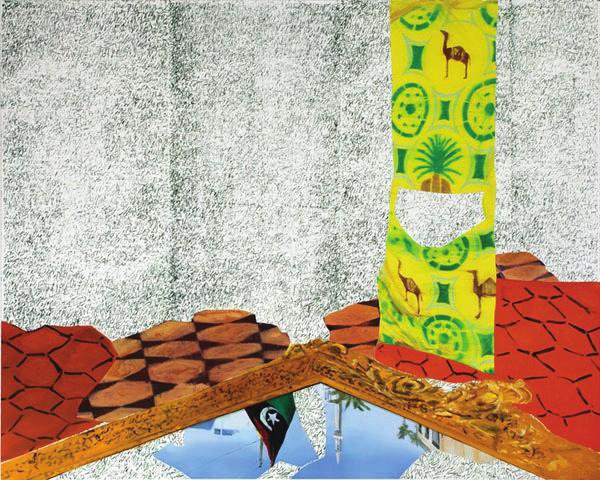Dexter Dalwood
dal 10/5/2012 al 22/6/2012
Segnalato da
10/5/2012
Dexter Dalwood
David Risley Gallery, Copenhagen
Orientalism, A solo exhibition of new paintings. "...the key notion of Orientalism cannot be confronted without a critical analysis of the particular power structure in which these works came into being" (Linda Nochlin).

David Risley Gallery is proud to present our second solo exhibition of new paintings
by Dexter Dalwood.
When Dexter Dalwood looks in the mirror, he sees white noise rendered from the details
of a 17th century etching. As an artist he holds up a mirror to the audience that
attempts to be conversely subjective as concept and objective as painting.
Further, Dalwood takes up the challenge: how to make paintings that maintain pleasure
whilst also being of contemporary significance. That is, how to continue a tradition
that is linked with privilege and leisure whilst upholding the ambition to make us
think. The challenge is self-explanatory; painting offers many ornamental pleasures,
but the reality of human struggle 'significance' is far from ornamental. Artists have
always resisted the role of entertainer, jester or ornament maker, but to attempt to
inject significance is to risk biting the proverbial hand.
‘...the key notion of Orientalism cannot be confronted without a critical analysis of
the particular power structure in which these works came into being. For instance,
the degreeof realism (or lack of it) in individual Orientalist images can hardly be
discussed without some attempt to clarify whose reality we are talking about.’
Linda Nochlin, The Politics of Vision. 1989
Be it in the studio, at home or out, 'reality' seems to happen elsewhere. An
overarching motif of these paintings is the white noise, which Dalwood calls an
‘expanded space for occupation’, TV without a signal. By day the painter is alone
(working) in the studio. At a certain moment 'reality' filters through via the news.
'Reality' is an image conjured over white noise, as the painted image is conjured over
blank canvas. Does any of it exist? Another motif is the reflected hence, still
further mediated—image of a mosque that could signify a middle-eastern country, perhaps
Libya or Iraq. Dalwood avoids specificity but our recognition, schooled by media images,
is immediate. The subject signified is outside the frame of the image painted. It is
literally not there, only reflected. If the unconscious is structured like a language
then Dalwood demonstrates that good painting is structured likewise.
Dexter Dalwood (Bristol, UK 1960). Dalwood studied at St. Martins School of Art and at
the Royal College of Art, London. His work has been shown in many important exhibitions
including show of new British art, Die Young Stay Pretty, ICA, London, 1998,
Neurotic Realism, 1999, Saatchi Gallery London. 2002 Sydney Biennial, Days Like These
(Tate Triennial), 2003. “Dexter Dalwood", a major survey show, Tate St Ives, 2010.
(FRAC Champagne Ardenne, Reims, France and CAC Malaga, Spain). Dalwood was short listed
for the 2010 Turner Prize. A major solo show will be held at Centre Pasquart, Biel,
Switzerland in 2013.
Image: Dexter Dalwood ‘Next Day’ , 2012. 2 x 2.5m Oil on canvas
Preview: Friday May 11. 17.00 - 20.00
David Risley Gallery
Bredgade 65 A | 1260 Copenhagen
Opening hours: Wed-Fri 12.00-17.00, Sat 11.00-15.00



